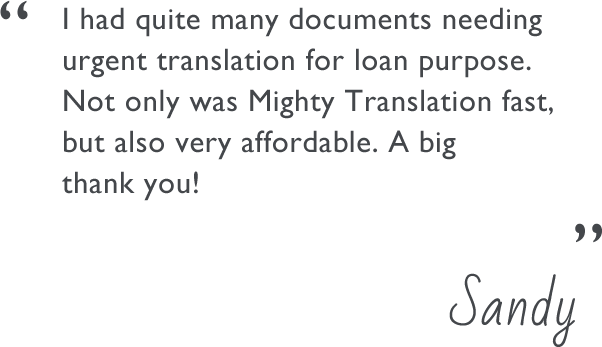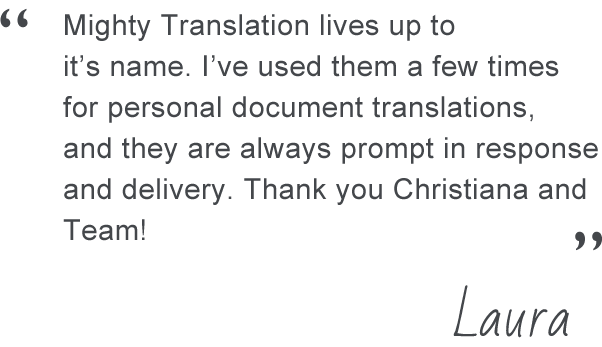- Translators
- Translation Services
- Testimonials
- FAQ
- Contact Us
Mongolian Bank Statement Translation
 Mighty Translation provides professional Mongolian bank statement translation. We translate individual bank statements daily, with only experienced translators detailed in financial document translations assigned for Mongolian bank statement translation.
Mighty Translation provides professional Mongolian bank statement translation. We translate individual bank statements daily, with only experienced translators detailed in financial document translations assigned for Mongolian bank statement translation.
We have expert Mongolian translators for both Mongolian to English and English to Mongolian document translation. Most of our Mongolian translators have more than 5 years' professional translation experience.
If you're looking for fast and affordable Mongolian bank statement translation, look no further. Our Mongolian translators ensure that all Mongolian bank statement translations are checked properly before delivery.
Bank statement translations are commonly used as proof of income, assets, proof of residency or proof of relationship. If you only require an extract translation of the bank statements, so the translation is clearer to the reader, feel free to let us know after payment, when you submit the bank statement documents for translation.
Why Choose Us?
- Only professional human Mongolian translators, no automated or machine translations.
- Full-time translators that have many positive reviews and delivered consistently
- Official translation company delivering translations for many different industries and needs
- Project managers monitoring delivery schedule and QA processes before final delivery, in accordance to ISO 9001:2015.
- Transparent pricing and commencement of projects within 2 hours from payment confirmation.
- Secure online payment provider certified to PCI Service Provider Level 1 - the most stringent level of certification available in the payment industry.
The Mongolian Language
The Mongolian language is the official language of Mongolia and both the most widely-spoken and best-known member of the Mongolic language family. The number of speakers across all its dialects may be 5.2 million, including the vast majority of the residents of Mongolia and many of the Mongolian residents of the Inner Mongolia Autonomous Region. In Mongolia, the Khalkha dialect, written in Cyrillic (and at times in Latin for social networking), is predominant, while in Inner Mongolia, the language is dialectally more diverse and is written in the traditional Mongolian script. In the discussion of grammar to follow, the variety of Mongolian treated is Standard Khalkha Mongolian (i.e., the standard written language as formalized in the writing conventions and in the school grammar), but much of what is to be said is also valid for vernacular (spoken) Khalkha and for other Mongolian dialects, especially Chakhar.
Some classify several other Mongolic languages like Buryat and Oirat as dialects of Mongolian, but this classification is not in line with the current international standard.
Mongolian has vowel harmony and a complex syllabic structure for a Mongolic language that allows clusters of up to three consonants syllable-finally. It is a typical agglutinative language that relies on suffix chains in the verbal and nominal domains. While there is a basic word order, subject–object–predicate, ordering among noun phrases is relatively free, so grammatical roles are indicated by a system of about eight grammatical cases. There are five voices. Verbs are marked for voice, aspect, tense, and epistemic modality/evidentiality. In sentence linking, a special role is played by converbs.
Modern Mongolian evolved from Middle Mongol, the language spoken in the Mongol Empire of the 13th and 14th centuries. In the transition, a major shift in the vowel-harmony paradigm occurred, long vowels developed, the case system changed slightly, and the verbal system was restructured. Mongolian is related to the extinct Khitan language. It was believed that Mongolian is related to Turkic, Tungusic, Korean and Japonic languages but this view is now seen as obsolete by a majority of (but not all) comparative linguists. These languages have been grouped under the Altaic language family and contrasted with the Mainland Southeast Asia linguistic area. Mongolian literature is well attested in written form from the 13th century but has earlier Mongolic precursors in the literature of the Khitan and other Xianbei peoples. The Bugut inscription dated to 584 CE and the Inscription of Hüis Tolgoi dated to 604-620 CE are currently the oldest substantial Mongolic or Para-Mongolic texts discovered.
Bank Statement Translation for Mongolian and other Languages
MONGOLIAN TRANSLATION SERVICES
Financial Services
Manufacturing
Business Services
Life Science
Technology
Government
Consumer Products
Mongolian Legal Translation
MONGOLIAN TRANSLATOR FOR WORLD LEADING COMPANIES







